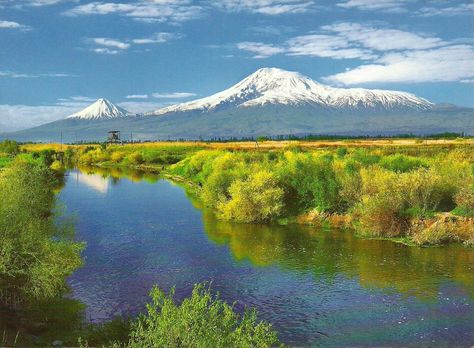Armenia is among the few countries in the region to have adopted and made tangible progress in implementing a National Adaptation Plan (NAP). In 2021, the Government of Armenia approved the National Action Program on Climate Change Adaptation and the List of Measures for 2021–2025, marking the coordinated launch of the NAP process.
The NAP outlines adaptation priorities across seven key sectors: forest ecosystems, human health, water resources, agriculture, energy, human settlements and infrastructure, and tourism. It also includes adaptation strategies for all ten marzes (administrative regions), with plans to develop sectoral adaptation plans (SAPs) tailored to each domain.
Armenia faces heightened vulnerability to climate change. Over one-third of the population lives in rural areas, and the national economy is heavily reliant on agriculture. Socioeconomic challenges further exacerbate climate risks, particularly for populations living below the poverty line. These groups are disproportionately affected by extreme temperatures, adverse weather events, and increasingly frequent natural disasters.
In April 2025, Armenia launched the development and implementation of an Integrated Drought Management Plan and accompanying Program of Measures, supported under the framework of SDG 2. A multidisciplinary expert working group was established to guide the process, and the content of the plan has been formally endorsed by its members.
Over the past six months, a draft document has been prepared. It includes:
- A summary of drought-related information, including definitions and typologies
- Legal and institutional frameworks
- A 30-year hydro-meteorological drought assessment using existing datasets and remote sensing methodologies
- Gap analyses and recommendations across legal, institutional, methodological, technical, and capacity-building dimensions
The Ararat River Basin—one of Armenia’s six major basins—has been selected as a pilot area for drought projection activities. These include assessments of climatic drought using the Standardized Precipitation Evapotranspiration Index (SPEI), and hydrological drought using indicators such as the Streamflow Drought Index (SDI), Standardized Streamflow Index (SSFI), and Standardized Reservoir Supply Index (SRSI).
A draft Program of Measures has also been developed and reviewed in consultation with the Ministry of Environment’s focal point.
Two stakeholder consultation meetings are scheduled for November 2025:
- One targeting key institutions in the water sector, technical specialists, and civil society organizations
- Another in the Ararat River Basin pilot area, engaging local self-government bodies and community residents
The project is expected to conclude between February and March 2026, with final documents submitted to the government for formal approval.
